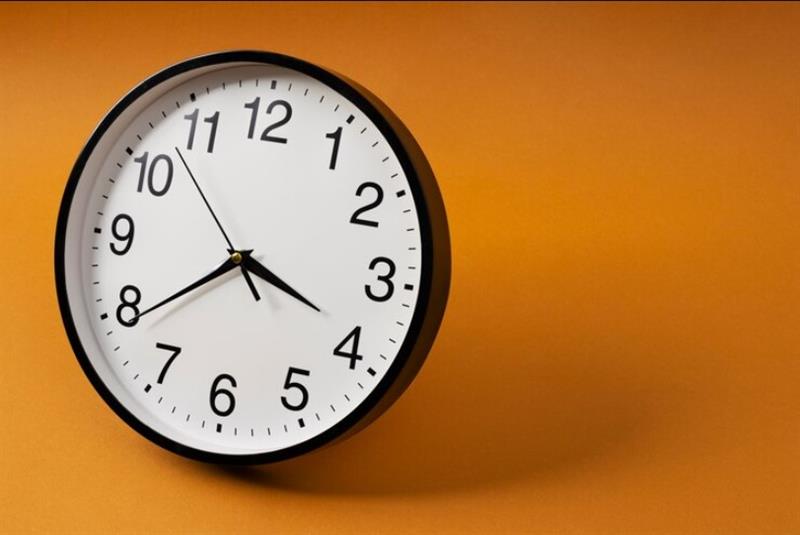Smart classrooms shape the way students learn today. Screens, projectors, and tablets fill learning spaces across Singapore. Yet even in this high-tech world, the analog clock continues to earn its place. These simple, round faces still play a strong role in teaching time, focus, and responsibility.
Let’s explore why these traditional time tools belong in every digital learning space.
Time Awareness Builds Through Visual Learning
Digital clocks show time in numbers. But analog clocks in digital classrooms do more. Their hands move in clear patterns, which helps students grasp time as a cycle. Young learners begin to understand how minutes tick forward and hours pass slowly.
Teachers often find that:
- Students develop a sense of “how long” a task takes
- Learners see time as movement, not just digits
- Lessons become easier to manage with visual time checks
Seeing time move helps students manage it better. That’s a skill they carry far beyond the classroom walls.
Smart Doesn’t Mean Replacing What Works
Not every tool needs a digital twin. While tablets flash alerts, an analog clock provides quiet reminders. It never resets during updates, never breaks down from app errors, and never needs charging.
In classrooms full of smart tools, this old tool does something special:
- It works during power cuts
- It teaches with no effort from the teacher
- It stays in place as a constant visual guide
Modern learning needs balance. A wall clock with hands gives students a solid anchor when screens feel fast or noisy.
Promotes Focus Without Distraction
Digital devices often distract. Bright screens and flickering digits call for attention. An analog display sits quietly, showing time without grabbing focus.
Students:
- Learn to glance, not stare
- Use time without losing track of tasks
- Avoid the urge to tap or scroll
Many teachers say that lessons run smoother when screens stay off and attention stays on. Analog clocks help shape this calm focus.
Supports Maths and Brain Development
Understanding an analog clock calls for counting, division, and pattern thinking. It builds number sense in ways that digital displays don’t.
Children who read clock hands learn:
- Half, quarter, and full-hour concepts
- Skip counting by fives
- Spatial awareness of time on a circle
Brain scans even show that this skill boosts memory and attention. Learning to tell time on an analog face builds more than just clock-reading—it strengthens how students think.
Fosters Time Management Skills Early
Younger students often find time confusing. They wonder, “How much longer?” or “When does this end?” An analog clock gives answers they can see.
In analog clocks in digital classrooms, children learn:
- When to wrap up work
- How to plan ahead
- What ten more minutes look like
Over time, students begin to manage their schedules. They move from needing reminders to setting their own pace.
Builds Life Skills for Exams and Real Life
Standardised tests, job interviews, and real-world tasks all rely on time. But not every room has a digital clock. Students must learn to read time in every form.
When children master analog clocks, they gain:
- Confidence in unfamiliar settings
- Speed during timed activities
- Readiness for older grade levels and real-life events
Digital tools change, but the need to read time stays the same. The analog clock teaches a skill that never fades.
Teachers Use Clocks to Shape Lessons
In many classrooms, the clock does more than show time. Teachers use it to shape structure. A glance at the wall helps with pacing and transitions.
For example, a teacher might:
- Point to the minute hand to signal “5 minutes left”
- Show where the hand should be when the task ends
- Guide students to self-check the time
Even in tech-rich spaces, teachers still trust the analog wall clock to manage flow.
Easy to Spot, Easy to Understand
Some digital clocks look small, faint, or tricky to find in bright rooms. Analog faces offer bold lines and big hands. Everyone can see them, even from the back of the room.
A good classroom clock:
- Hangs where all can view it
- Has clear, high-contrast numbers
- Moves with silent ticking to avoid noise
This makes the analog clock a quiet helper in all learning environments.
Smart Classrooms Can Combine Both Worlds
Using digital and analog together creates rich learning. Smartboards may show a countdown, while a clock on the wall keeps real time. This blend helps students compare and adapt.
Teachers might use both to:
- Track lesson goals on a timer
- Let students plan work with wall time
- Switch between short tasks and deep focus
No need to pick one or the other. In smart classrooms, both can thrive together.
Common Misconceptions About Analog Clocks
Some believe analog clocks confuse children. Others think they serve no use today. These ideas fall apart when placed in real classrooms.
Let’s compare a few myths and truths:
| Misconception | Reality |
| Kids find analog clocks too hard | Most learn with simple steps and daily exposure |
| Only digital matters in smart rooms | Analog supports brain growth and calm focus |
| Analog clocks break often | Quality clocks last for years with little care |
This tool isn’t old—it’s timeless.
Preparing Students for a Mixed World
Today’s world blends paper with screens, clocks with apps, and real tools with digital ones. Schools must prepare children for both. Analog clocks do that job well.
They teach:
- Patience in a fast world
- Skills for the tools they’ll meet in tests and jobs
- Time thinking that links with deep learning
By adding analog tools to digital settings, we help students build rounded, useful habits.
Why Every Smart Classroom Still Needs Analog Clocks?
In the rush to go digital, some schools remove analog tools too fast. But these clocks still serve a key role in classrooms.
Here’s what they add:
- Real-time awareness
- Maths thinking
- Self-paced learning
- Visual learning
- Classroom structure
When teachers, parents, and schools work together, they often agree: smart doesn’t mean everything must change. The best smart classrooms blend old and new.
Final Thoughts
The analog clock might seem like a simple tool. But it supports deep learning, clear thinking, and steady focus. In modern classrooms, it gives more than time—it gives structure.
While screens glow and apps buzz, a clock on the wall ticks on. It doesn’t distract. It teaches without a word. And it keeps time in a way students can see, trust, and use.
That’s why analog clocks in digital classrooms still belong. They support young minds. They balance tech with touch. They help children think, plan, and grow—minute by minute, hand by hand.
FAQ’s
1. What is an analog clock?
An analog clock is the kind with hour and minute hands that move in a circle. It doesn’t show numbers digitally — it points to the time the old-fashioned way. But that doesn’t make it old or useless!
2. How does an analog clock help in learning?
Analog clocks teach math naturally. Students learn to count by 5s, split circles into quarters, and see time as movement. It also helps with focus, since they can glance at the time without getting distracted by a phone or screen.
3. Are analog clocks better than digital ones?
Both have their place. But analog clocks train the brain to think, while digital clocks just show the answer. In smart classrooms, it’s great to have both — digital for quick checks, analog for deeper learning.
4. Where should we place analog clocks?
Put them where all students can see them clearly — usually above the whiteboard or near the door. Make sure the hands are bold and easy to read, so students can check the time quickly from any seat.



